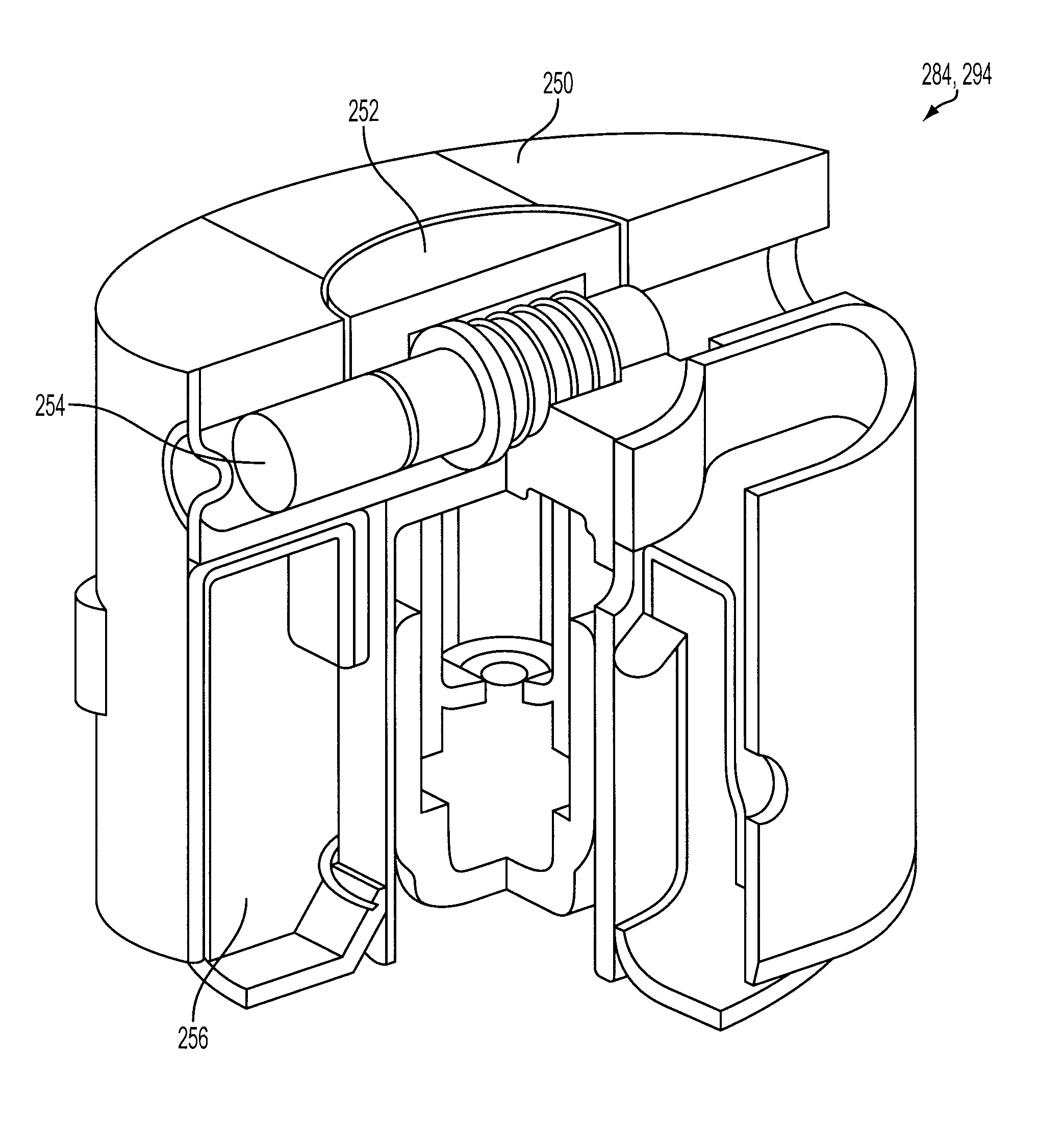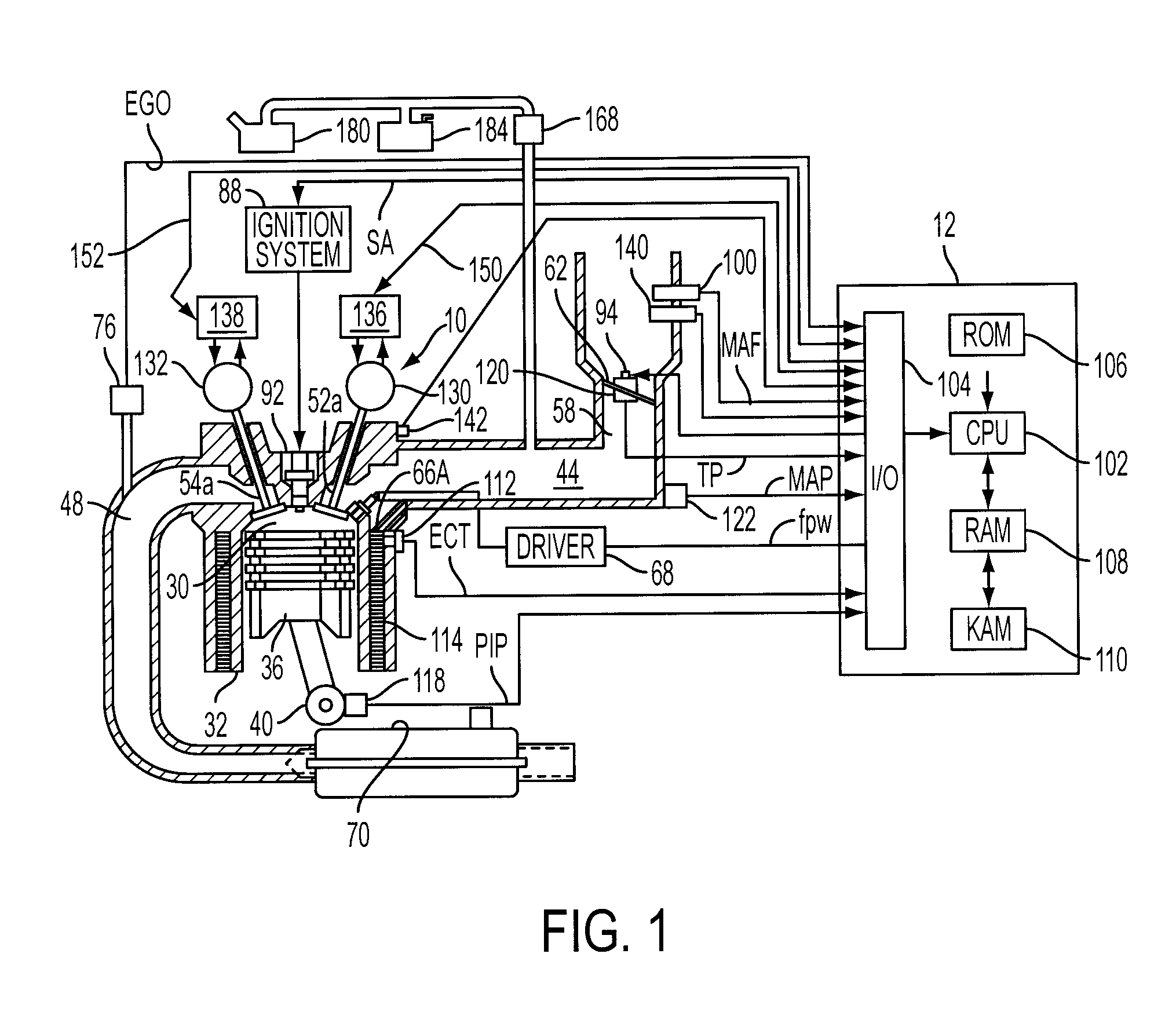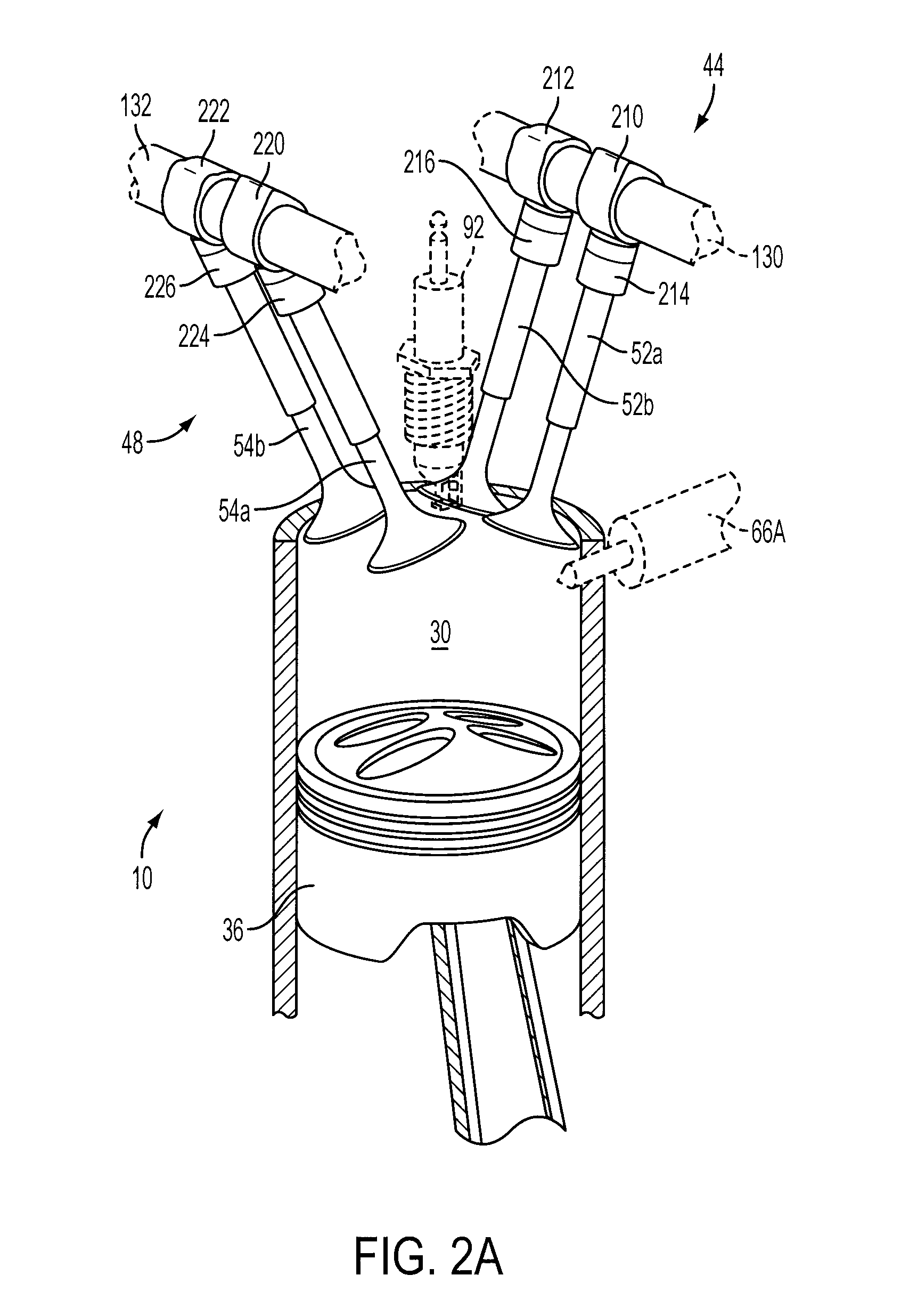System and method for adaptive control of variable valve lift tappet switching
a technology of adaptive control and variable valve lift, which is applied in the direction of electric control, combustion air/fuel-air treatment, machines/engines, etc., can solve the problems of variable delay, different valve operation, time delay, etc., and achieve the effect of reducing torque fluctuations, vibration and audible noise, and emission spikes
- Summary
- Abstract
- Description
- Claims
- Application Information
AI Technical Summary
Benefits of technology
Problems solved by technology
Method used
Image
Examples
Embodiment Construction
[0019]FIG. 1 shows one cylinder of a multi-cylinder engine, as well as the intake and exhaust path connected to that cylinder. Continuing with FIG. 1, direct injection internal combustion engine 10, comprising a plurality of combustion chambers, is controlled by electronic engine controller 12. Combustion chamber 30 of engine 10 is shown including combustion chamber walls 32 with piston 36 positioned therein and connected to crankshaft 40. A starter motor (not shown) is coupled to crankshaft 40 via a flywheel (not shown). Combustion chamber, or cylinder, 30 is shown communicating with intake manifold 44 and exhaust manifold 48 via respective intake valves 52a and 52b (not shown, see FIG. 2), and exhaust valves 54a and 54b (not shown, see FIG. 2). Fuel injector 66A is shown directly coupled to combustion chamber 30 for delivering injected fuel directly therein in proportion to the pulse width of signal fpw received from controller 12 via electronic driver 68. The fuel injector may be...
PUM
 Login to View More
Login to View More Abstract
Description
Claims
Application Information
 Login to View More
Login to View More - R&D
- Intellectual Property
- Life Sciences
- Materials
- Tech Scout
- Unparalleled Data Quality
- Higher Quality Content
- 60% Fewer Hallucinations
Browse by: Latest US Patents, China's latest patents, Technical Efficacy Thesaurus, Application Domain, Technology Topic, Popular Technical Reports.
© 2025 PatSnap. All rights reserved.Legal|Privacy policy|Modern Slavery Act Transparency Statement|Sitemap|About US| Contact US: help@patsnap.com



